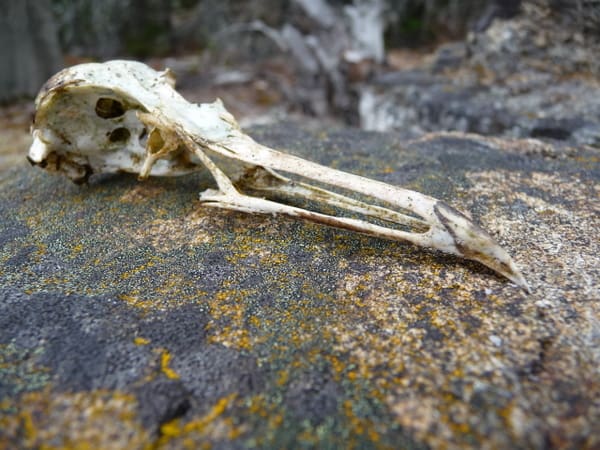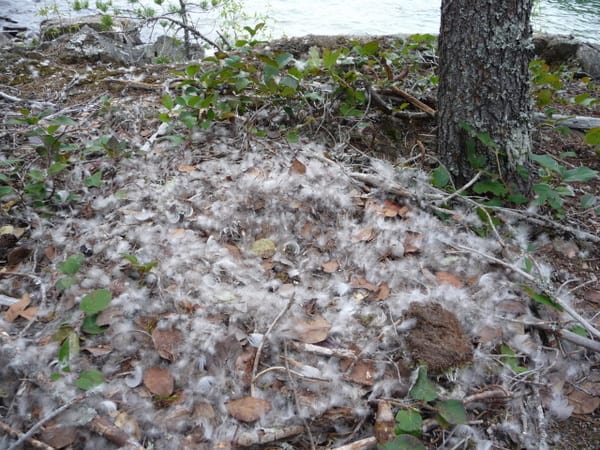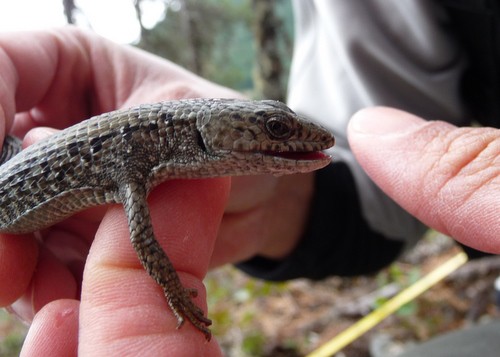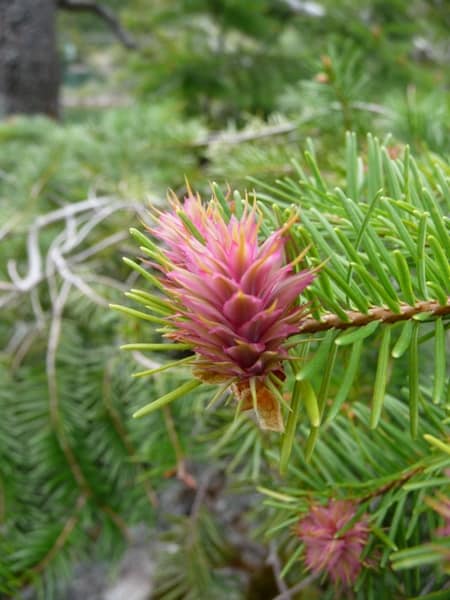A day on the islands

Last week the Cohort 8 graduate students headed to the islands of Diablo Lake for class. The topic of the day: island biogeography, which is the study of the distribution and abundance of species on physical and habitat islands. I won’t go into too many details, although I think the study of habitat islands is fascinating, what I want to share with you are pictures of what we discovered.
 (Top) bird skull, (above) a Canada goose nest.
(Top) bird skull, (above) a Canada goose nest.
The first exciting discovery of the day was a bird skull! We couldn’t believe our luck. It was intact, amazingly delicate and so cool. We also found a pair of seagull wings that were still connected and covered with feathers. Gene Myers, Ph.D., our professor, explained the intricate design of the wings and the function of the muscles and tendons in flight. Another avian discovery of the day were three Canada goose nests. These nests were essentially mounds of down feathers, dried leaves and twigs littered with broken egg shells and scat. A pair of Canadian geese and their goslings have been spotted along the road and now we know where they were born.

Northern Alligator lizard
Our next great find for the day was a Northern alligator lizard. This critter was not as excited about us as we were about him. This discovery lead to a lengthy conversation about dispersal, immigration and movement barriers. When and how did this species of lizard arrive on this island? How many individuals are there? How is the population size impacting the gene pool on the island?

Douglas fir cones
Our last notable discovery of the day were the pink Douglas fir cones we found on the east end of the island. Pink fir cones? What? None of us had ever before seen Douglas fir cones in this stage, they were so beautiful and unusual. What is strange is that we haven’t found any more pink cones on the mainland. Are they all too high up for us to see? So many unanswered questions for us to ponder.
I have looked at these islands perhaps hundreds of times and thought often about habitat connectivity and habitat islands but now, after a day of exploring and questioning, I am beginning to visualize these concepts and see their impacts. Yet another reminder of why I am in the field of environmental education; being outside, asking questions and slowly finding answers (or just more questions) is really my favorite way to learn.
Photos courtesy of Jenny Lee

I’ve found pink cones too, but on a shore pine (Pinus contorta) in Discovery Park. Take a look:http://naturegeeknw.blogspot.com/2009/05/hot-pink-pine-flowers.html
Your notes and photos here are great for sharing the intimate and specific details of the islands on this particular day — I appreciate your attentiveness and generosity too. Really good pics!
Oops, that skull is definitely NOT that of a raven, or even a crow. The nose is much too long to be anything other than that of a sea bird. Some type of gull, no doubt.